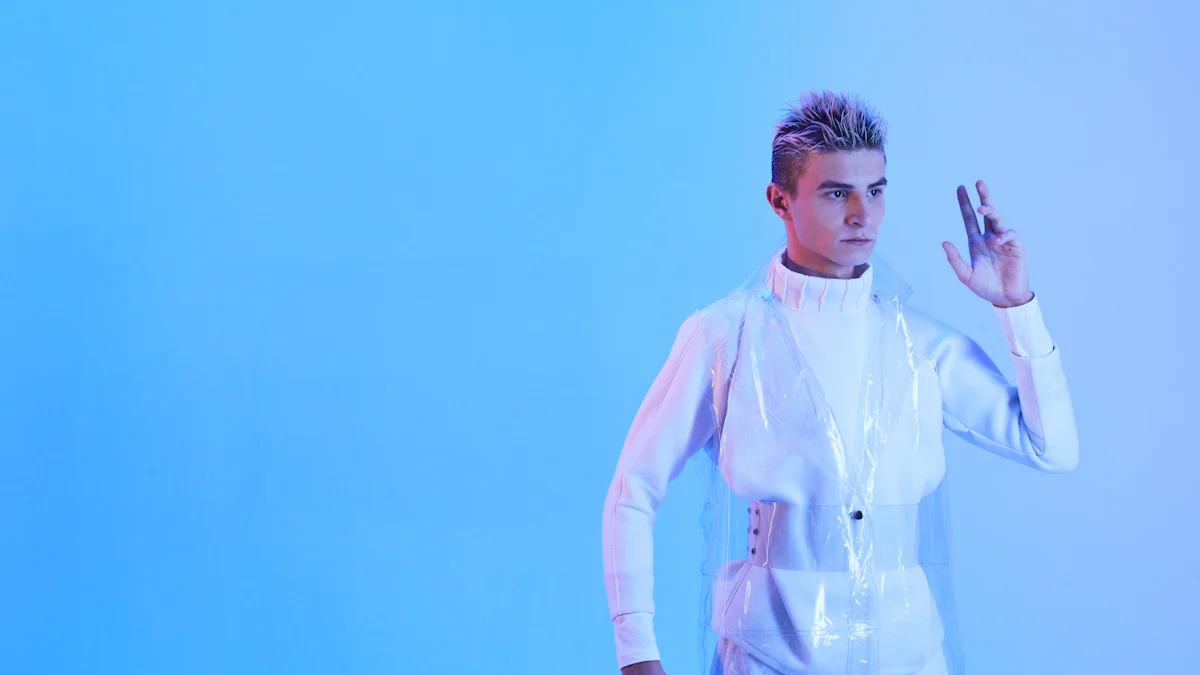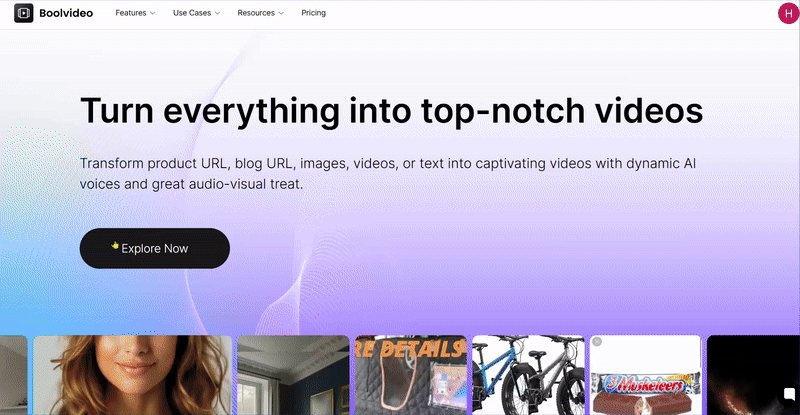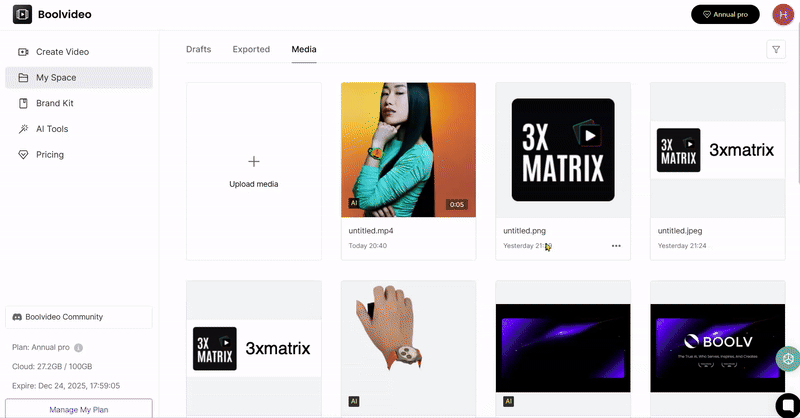How to Use AI Clothing Generator for Stunning Fashion Designs

Imagine creating stunning fashion pieces without spending hours sketching or sewing. AI clothing generators make this possible using advanced algorithms to generate fashion designs tailored to your preferences. These tools analyze trends, patterns, and textures in minutes to craft unique clothing ideas. Whether you're a seasoned designer or just starting, they’re easy to use and accessible to everyone.
AI is transforming the fashion world. For instance, 73% of executives plan to prioritize generative AI in 2024, and it could add up to $275 billion in profits to the industry in the next five years. With AI clothing generators, you can save time, explore endless creative possibilities, and effortlessly bring your design ideas to life.
Key Takeaways
AI clothing tools save time by making many designs fast. This lets you focus on improving your ideas.
These tools boost creativity by studying trends and giving fresh ideas. They help you stay ahead in fashion.
You can customize designs to match your style. This makes sure your clothes show your unique taste.
AI clothing tools are easy for everyone to use. Both beginners and experts can enjoy designing with them.
Trying different prompts and mixing AI designs with your edits can create amazing and one-of-a-kind outfits.
What Are AI Clothing Generators?
Definition and Overview
AI clothing generators are tools that use artificial intelligence to create unique clothing designs. These tools analyze data, such as trends, patterns, and user preferences, to generate custom ai-generated clothing ideas. Unlike traditional fashion design software, AI clothing generators allow you to experiment with designs quickly and effortlessly. They’re perfect for anyone looking to save time while exploring creative possibilities in fashion.
Some key features make these tools stand out:
Feature | Description |
|---|---|
Customization | Easily tailor designs to specific themes, styles, or target audiences. |
Cost-Effective | Reduce the need for hiring additional designers or outsourcing design work. |
Experimentation | Test out various design concepts without committing to a final product. |
Whether you’re a professional AI fashion designer or just starting, these tools make fashion design more accessible and exciting.
Popular AI Clothing Generator Tools
There are many AI video production tools here that are very useful, such as DeepArt.io, Artbreeder, RunwayML, and so on. You must know some of these, but there is one tool that you must not miss, which is Boolvideo. Many merchants who sell clothes on major e-commerce platforms will use this tool because its functions are too powerful and complete.
Not only can you convert static product display images into dynamic videos, but you can also generate dynamic images from them. For example, some images are model images of people wearing the clothing you sell, but consumers may not be able to accurately capture the full display angle of the clothing. In this case, you can use its one-click dynamic image generation function.
Let's take a look below and you'll know how to achieve this goal because this feature is also a recent addition, but its effect is very realistic. Let's take a look together!


In addition, Boolvideo's features are not limited to these, and its basic eight functions can cover most of your needs. You just need to choose the appropriate function according to your requirements. What are you waiting for? If you're tempted, click below to try it out!
Create Video Now
One-click access to your exclusive AI clothing generator

How AI Clothing Generators Work
AI clothing generators rely on advanced technologies to bring your ideas to life. They use generative AI and deep learning algorithms to analyze input data, such as prompts or reference images. These tools can also forecast trends and recommend designs based on your preferences. For example, you can upload an image of a fabric pattern, and the AI will create multiple variations or suggest complementary designs.
Unlike traditional methods, AI in fashion allows you to iterate quickly. You can refine your ideas, test different styles, and even generate AI dress design concepts in minutes. This makes the process faster and more efficient, giving you more time to focus on creativity.
Benefits of Using AI Clothing Generators
Time-Saving and Efficiency
AI clothing generators are a game-changer when it comes to saving time. These tools can create hundreds of designs in just minutes, something that would take a human designer days or even weeks. Imagine inputting a simple idea and watching it transform into multiple variations instantly. This rapid process allows you to focus more on refining your ideas rather than starting from scratch every time.
With AI, you can also turn basic sketches into photorealistic renders. This makes it easier to communicate your vision to clients or collaborators. Plus, the ability to quickly prototype and modify designs streamlines your workflow. Whether you're working on a single piece or an entire collection, AI tools help you stay efficient without compromising on quality.
Tip: Use AI clothing generators to explore multiple design options before committing to a final look. It’s a great way to experiment without wasting time.
Enhancing Creativity and Innovation
AI in fashion doesn’t just save time—it sparks creativity. These tools analyze trends, social media, and consumer habits to predict what’s next in the fashion world. This means you can stay ahead of the curve and design pieces that resonate with your audience.
AI also acts as a source of inspiration. Blending existing styles or generating entirely new concepts, it helps you think outside the box. For example, you might discover a futuristic jacket design or a unique pattern you hadn’t considered before. And by optimizing the design process, AI supports sustainable practices, reducing waste and unnecessary returns.
Did you know? AI clothing generators can even suggest designs that align with eco-friendly trends, helping you create sustainable fashion collections.
Customization and Personalization
One of the most exciting features of AI clothing design is its ability to offer personalized recommendations. These tools tailor suggestions based on your preferences, body type, or even your existing wardrobe. Want to explore new styles without committing to a purchase? AI makes it possible to preview outfits virtually, so you can make informed decisions.
Customization is another standout benefit. You can create designs that fit specific themes, occasions, or target audiences. Whether you’re revamping your social media look or designing a professional wardrobe, AI ensures your clothing reflects your unique style.
Feature | Description |
|---|---|
Personalization | Tailor's suggestions are based on user preferences, body type, and existing wardrobe items. |
Convenience | Offers quick and easy outfit recommendations, saving time and effort. |
Diversity | Provides a wide range of styles, from casual to formal attire. |
AI clothing generators make it easy to experiment with fashion design software and create customized designs that truly stand out.
Accessibility for Designers of All Levels
AI clothing generators are designed to make fashion design approachable for everyone, no matter your skill level. Whether you're a beginner exploring your creative side or a seasoned designer looking for fresh ideas, these tools simplify the process and open up endless possibilities.
If you're new to fashion design, AI tools guide you step by step. Here's how you can get started:
Choose your platform. Pick an AI clothing generator like APOB AI or another tool that fits your needs.
Input your preferences. Specify details like the style, fabric, color, and type of outfit you'd like to create.
Generate outfits. Click the "Generate" button and let the AI produce multiple designs based on your input.
Select and customize. Once you find a design you like, tweak it by adjusting the fit, texture, or color.
Experiment. Try different combinations and generate as many ideas as you want until you find the perfect look.
For beginners, this process removes the intimidation of starting from scratch. AI systems even provide personalized recommendations by analyzing your preferences. They suggest designs and colors tailored to your taste, making it easier to explore unique styles. You don't need advanced skills or expensive software to create something amazing.
Experienced designers also benefit from these tools. AI speeds up the design process and helps you experiment with bold, innovative ideas. You can focus on refining your vision while the AI handles the heavy lifting. Whether you're designing a single piece or an entire collection, these tools make the process faster and more efficient.
AI clothing generators truly level the playing field. They give everyone—from hobbyists to professionals—the chance to create stunning clothing designs with ease.
Step-by-Step Guide to Using AI Clothing Generators

Choosing the Right Tool
Selecting the right AI clothing generator is the first step to bringing your fashion ideas to life. With so many options available, it’s important to consider what features align with your needs. Here are some factors to keep in mind:
3D garment simulation: Look for tools that simulate realistic fabric draping and movement on 3D models.
Customizable models: Choose platforms offering diverse body shapes and sizes to ensure inclusivity.
Material and texture library: Access a wide range of fabrics, patterns, and textures to customize your designs.
Ease of use: If you’re new to AI clothing design, pick a tool with a simple interface.
Cost-effectiveness: Compare pricing to find a tool that fits your budget.
Here’s a quick comparison of popular tools:
Metrics | Rating | Diversity of Models | Generating Speed | Customization Options | Ease of Use |
|---|---|---|---|---|---|
insMind | Wide range | Highest | Extensive | Easiest | |
Vmake.ai | 4.5/5 | Basic | Good | Moderate | Moderate |
Botika.io | 4.4/5 | Average | Good | Limited | Easy |
Take your time exploring these options. The right tool can make all the difference in your creative process.
Setting Up Your Account
Once you’ve chosen your tool, setting up your account is a breeze. Most platforms guide you through the process step by step. Here’s what you’ll typically need to do:
Sign up: Provide your email address or link to an existing account like Google or Facebook.
Choose a plan: Many tools offer free trials or basic plans. Upgrade later if you need advanced features.
Set preferences: Input details like your preferred styles, colors, or themes. This helps the AI tailor its suggestions to your taste.
Explore tutorials: Some platforms include quick guides or videos to help you get started.
After setting up, you’re ready to dive into the exciting world of AI clothing design.
Inputting Prompts and Preferences
AI tools rely on your input to generate designs that match your vision. Writing effective prompts is key to getting the best results.
How to Write Effective Prompts
When crafting prompts, clarity is everything. Be specific about what you want. For example:
Define the style: Specify whether you want a casual, formal, or avant-garde look.
Provide clear guidelines: Mention details like fabric type, color palette, or patterns.
Incorporate inspiration: Upload reference images or describe existing designs you admire.
Consider functionality: Think about comfort and practicality when describing your ideal outfit.
Encourage creativity: Allow the AI to experiment within your parameters for unique results.
Examples of Prompts for Fashion Design
Here are some examples to inspire your prompts:
"Create a summer dress with floral patterns and a flowing silhouette."
"Design a futuristic jacket with metallic textures and bold shoulders."
"Generate a casual outfit for a weekend outing, featuring denim and pastel tones."
"Create multiple outfits for different occasions, including a formal gala and a beach party."
By refining your prompts, you’ll unlock the full potential of your AI outfit generator and bring your ideas to life.
Reviewing and Refining Outputs
Once your AI clothing generator has created designs, it’s time to review and refine them. This step ensures the final output aligns with your vision and meets your fashion goals. Start by examining the generated designs closely. Look for details like fabric textures, color combinations, and overall style. Does the design match your preferences? If not, you can tweak it further.
AI tools are powerful, but they’re not perfect. Sometimes, you’ll notice issues like repetitive patterns or a lack of variety in the outputs. This happens because AI models often rely on their previous outputs, creating a loop that limits creativity. To break this cycle, try adjusting your prompts or adding new inspiration. For example, upload a fresh reference image or describe a unique theme. This keeps the AI from falling into an echo chamber of stale ideas.
Another tip is to focus on uniformity. If you’re designing a collection, ensure the pieces complement each other. You might need to refine individual designs to create a cohesive look. Most AI tools let you make small edits directly, like changing colors or adjusting proportions. Use these features to perfect your designs before moving forward.
Pro Tip: Don’t rush this step. Take your time to review every detail. A little extra effort here can make a big difference in the final result.
Exporting and Using Your Designs
After refining your designs, the next step is exporting them. Most AI clothing generators make this process simple. You’ll usually find an export button that lets you download your designs in various formats, like PNG, JPEG, or even 3D files. Choose the format that works best for your project.
If you’re planning to use the designs for production, opt for high-resolution files. These ensure every detail, from fabric patterns to stitching, is clear. For digital presentations or social media, lower-resolution files might work just fine. Some tools even let you export designs directly into fashion design software for further editing.
Once you’ve exported your designs, the possibilities are endless. Use them to pitch ideas to clients, create mood boards, or even start prototyping. If you’re a beginner, try sharing your designs on social media to get feedback. This can help you refine your skills and build confidence.
Note: Always double-check the licensing terms of your AI tool. Some platforms may have restrictions on how you can use the exported designs commercially.
By following these steps, you can turn your AI-generated clothing ideas into real-world fashion pieces. Whether you’re designing for fun or for a professional project, exporting your designs is the final step in bringing your vision to life.
Tips for Maximizing Results
Experimenting with Different Prompts
Experimenting with prompts is one of the best ways to unlock the full potential of AI clothing generators. The more creative and specific you get, the better the results. For instance, instead of asking for a "formal outfit," try something like, "A person in a sophisticated formal outfit, attending a high-class evening event, surrounded by elegant chandeliers and soft ambient lighting, radiating luxury and refinement." This level of detail helps the AI understand your vision more clearly.
You can also explore different themes and styles. Imagine a classic vintage look with a 1950s polka dot dress or a sleek fedora in a retro diner setting. Or picture an athletic person sprinting on a track, wearing cutting-edge sportswear with dynamic motion blur emphasizing speed. These prompts not only guide the AI but also inspire you to think outside the box.
Tip: Don’t hesitate to mix and match ideas. Combining elements from different prompts can lead to truly unique fashion designs.
Combining AI Outputs with Manual Edits
AI tools are powerful, but your personal touch can elevate the designs even further. Once the AI generates an outfit, take time to refine it. Adjust the colors, tweak the proportions, or add intricate details that reflect your style. Many designers use AI to create a base design and then enhance it manually.
For example, you might use AI to generate multiple variations of a jacket. Then, you can select the best one and add custom embroidery or unique stitching patterns. This collaboration between AI and human creativity often leads to stunning results. Art studios have reported significant efficiency gains by letting AI handle repetitive tasks while focusing on the creative aspects themselves.
Pro Tip: Think of AI as your creative assistant. Let it handle the groundwork while you focus on perfecting the final product.
Staying Updated on AI Trends and Features
AI technology evolves rapidly, and staying updated can give you a competitive edge. Emerging trends like AI-driven augmented and virtual reality tools are transforming the fashion world. These tools let customers visualize garments on themselves, making online shopping more interactive. Apps like DressX even allow users to project clothing onto their bodies, helping them make better decisions.
Generative AI is also enhancing personalized shopping experiences. It customizes web pages and product descriptions based on consumer profiles, making it easier to connect with your audience. Tools like Khroma and Zmo.ai are helping designers create realistic model images and color palettes, streamlining the design process.
AI is also contributing to sustainability. Fabric pattern generators reduce excess textiles, and uploading reference images ensures efficient use of resources. By keeping up with these advancements, you can maximize the potential of AI clothing generators and stay ahead in the fashion industry.
Did you know? AI tools now allow designers to create numerous design variations quickly, fostering creativity and experimentation like never before.
Leveraging Feedback from Clients or Peers
Feedback is one of the most powerful tools you can use to improve your AI-generated clothing designs. Whether it’s from clients, peers, or even your social media followers, their insights can help you refine your creations and make them more impactful. But how do you gather and use this feedback effectively?
Start by creating a structured process for collecting feedback. A simple rubric can work wonders. For example, you could ask your peers to evaluate your designs based on criteria like originality, practicality, and visual appeal. Encourage them to provide detailed suggestions instead of just a score. This approach fosters constructive discussions and helps you see your work from different perspectives.
Tip: Use a 360-degree feedback method. This means gathering input from multiple sources—clients, colleagues, and even potential customers. The more diverse the feedback, the better your designs will become.
Another great way to gather feedback is by using tools like Likert scales. These allow people to rate specific aspects of your designs, such as color combinations or fabric choices, on a scale (e.g., 1 to 5). This method makes it easy to spot patterns in the feedback and identify areas for improvement. Plus, it promotes knowledge sharing, as you can learn from the comments others leave.
Once you’ve collected feedback, don’t just skim through it—analyze it carefully. Look for recurring themes or suggestions. If multiple people mention that a design feels too busy, consider simplifying it. If they love a particular element, think about how you can incorporate it into future designs.
Pro Tip: Feedback isn’t just about fixing flaws. Use it to discover new ideas or trends you might’ve missed. Sometimes, a fresh perspective can spark your next big design breakthrough.
By embracing feedback, you’ll not only improve your designs but also build stronger connections with your clients and peers. It’s a win-win for everyone involved!
How AI is Shaping the Future of Fashion Design
AI is revolutionizing fashion by enhancing innovation and promoting sustainability. Tools like CLO3D and Browzwear allow you to visualize designs in 3D, reducing the need for physical prototypes and cutting down on material waste. Companies like Livetrend and Heuritech use AI to forecast demand, helping manufacturers avoid overproduction and minimize waste.
AI also optimizes production workflows, making the entire process faster and more efficient. By analyzing social media trends, AI ensures that designs resonate with current consumer preferences. On-demand manufacturing powered by AI further reduces inventory waste, contributing to a more sustainable fashion industry.
The future of fashion is undeniably intertwined with AI, offering endless possibilities for creativity and eco-conscious design.
AI clothing generators are revolutionizing how you approach fashion design. They save time, enhance creativity, and make design accessible to everyone. These tools help you reduce fabric waste, experiment with unique patterns, and even create outfits that align with sustainable practices. By uploading reference images or using tools like StyleGAN, you can inspire designs that reflect your vision while staying eco-friendly.
Ready to design your perfect outfit? Start by choosing a platform that fits your needs. Input your preferences, generate designs, and refine them until they match your style. Don’t hesitate to experiment—AI empowers you to explore endless possibilities in fashion. Dive in and let your creativity shine!
FAQ
What is the best AI clothing generator for beginners?
For beginners, tools like Artbreeder or RunwayML are great choices. They’re user-friendly and offer simple interfaces. You can start experimenting without feeling overwhelmed. Plus, they provide tutorials to guide you through the process.
Can I use AI clothing designs for commercial purposes?
Yes, but check the licensing terms of the tool you’re using. Some platforms allow commercial use, while others may have restrictions. Always review the terms before selling or sharing your designs.
Do I need design experience to use AI clothing generators?
Not at all! These tools are designed for everyone. You just need to input your preferences or prompts. The AI handles the rest. Even if you’re new to fashion design, you can create stunning outfits in minutes.
How much do AI clothing generators cost?
Costs vary. Many platforms offer free trials or basic plans. Advanced features may require subscriptions, ranging from $10 to $50 per month. Compare pricing and features to find what fits your budget.
Can AI clothing generators help with sustainable fashion?
Absolutely! AI reduces waste by creating virtual prototypes and optimizing fabric usage. It also helps you design eco-friendly collections by suggesting sustainable materials and patterns. You can align your designs with green fashion trends effortlessly.
Tip: Use AI tools to explore sustainable options and reduce your environmental impact.
See Also
Top 10 AI Animation Tools To Enhance Your Creativity
Five Leading AI Video Generators For Content Creators
Animating Still Photos With AI Tools For Dynamic Effects


